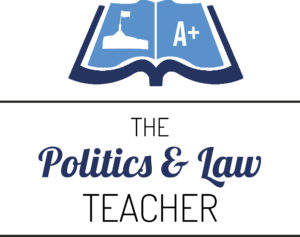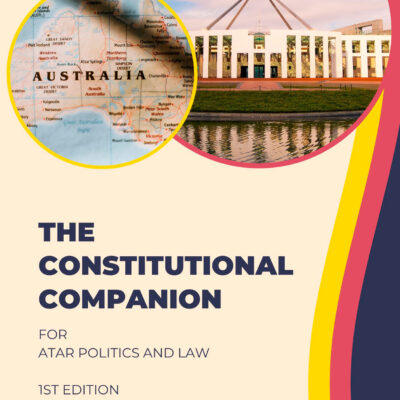Australian Climate Policy
An issue related to political power
Like a lightning bolt of destruction, the climate change issue has destroyed Prime Ministerial careers, split party rooms and struck ordinary citizens through intensifying fires, floods and droughts.
Against increasingly severe climate disasters impacting the lives of ordinary Australians, the nation’s political and legal system has struggled – even failed – to produce an adequate response to climate change. The issue has divided the major parties and split them internally. It was terminal for four Prime Ministers and contributed to three governments losing office. It may even have broken Australia’s two-party system.
Political parties and pressure groups have been highly influential in making and unmaking laws addressing the climate challenge.
In 2022, perhaps the climate wars will be over as electors chose a radically different Parliament and a new government committed to action on climate change.
The road to ruin – Australia’s climate wars from 2006 to 2022
In 2006, the Howard Government reluctantly adopted an emissions trading scheme (ETS). An ETS is a market-based mechanism that prices carbon dioxide emissions and allows trading carbon permits. Carbon permits authorise CO2 emission and are issued by governments. In theory, governments gradually remove carbon permits from the carbon trading market, thus reducing emissions. As a market-based mechanism, an ETS fitted the Liberal Party’s ideology and aligned with international developments. Mr Howard took the policy to the 2007 election but lost.
Kevin Rudd stole a march on Mr Howard by declaring climate change the “greatest moral challenge of our time”. He led the Labor Party to victory with a more ambitious climate policy called the Carbon Pollution Reduction Scheme (CPRS). To build momentum and consensus, Mr Rudd held a climate summit at Parliament House shortly after he formed his new government. The Rudd CPRS was another ETS-style market-based “cap and trade” scheme. However, by the time the bills were ready in 2009, lobbying by powerful mining and business pressure groups had watered down the CPRS.
Meanwhile, the Coalition opposition changed its leadership from the climate-friendly Malcolm Turnbull to the climate-hostile Tony Abbott – sinking any chance of bipartisanship on the issue. Further disaster struck Mr Rudd when the world rejected decisive action on climate change at the Copenhagen Climate Conference, leaving him isolated and vulnerable to political pressure at home. The Senate rejected the CPRS twice when the Greens voted with the Coalition against it. Mr Rudd was advised to call a double dissolution but lacked the courage of his climate conviction and withdrew the bills instead. His back down was the beginning of the end for Mr Rudd as his polling plummeted. He became the first Prime Ministerial casualty of Australia’s climate wars when Deputy PM, Julia Gillard, moved against him in mid-2010. The Labor Party chose her to replace Mr Rudd as party leader and Prime Minister.
Ms Gillard went to an election shortly after deposing Mr Rudd. After the disaster of the CPRS, Ms Gillard promised that “there would be no carbon tax under a government I lead”. The 2010 election delivered a hung parliament, with both major parties winning 72 seats. Seventeen days of tense negotiations with independents and the Greens in the House of Representatives followed. In the end, Ms Gillard won the support of four non-Labor MHRs to form a minority government. The Greens and two of the independents – Rob Oakeshott and Tony Windsor – were highly influential in this process. The price of their support was a price on carbon dioxide emissions. Ms Gillard agreed.
The Gillard minority government legislated the carbon price. The plan was to introduce a fixed price on carbon and then transition to a cap and trade scheme similar to those proposed by Mr Howard and Mr Rudd. Regrettably, Ms Gillard stumbled in an interview and referred to the fixed carbon price as a “carbon tax”. The opposition leader, Tony Abbott, seized on her words and declared her a liar. For the rest of her Prime Ministership, she was hounded by accusations that she broke an election promise. Her poll ratings plummetted, and Kevin Rudd staged a revenge-coup by convincing the Labor caucus to replace Ms Gillard with him. Julia Gillard had become the second Prime Minister to fall over climate policy. Mr Rudd led the Labor Party to defeat in the 2013 election a few months later.
Tony Abbott became Prime Minister after promising to “axe the tax”. His Coalition had routed the Labor Government and won a 14-seat majority. Backed by a robust mandate, the Parliament speedily assented to the Abbott Government’s repeal bill, and the “carbon tax” was no more. Not satisfied with this, Mr Abbott – who had described climate change “absolute crap” – scrapped the Climate Commission and proceeded to cut the Renewable Energy Target (RET) from 41,000 to 27,000-gigawatt hours. The Howard Government legislated the RET in 2007 to force 20% – later reduced to 8% to 10% – of Australia’s electricity to be generated from renewable sources.
Mr Abbott’s climate policy was the Direct Action scheme, with the Emissions Reduction Fund (ERF) was at its heart. The ERF was designed to pay polluters for reducing carbon dioxide emissions. It was completely different from the earlier “cap and trade” systems and was based on government intervention – i.e. not a market-based scheme – that ran counter to the Liberal Party’s free market ideology. That simple fact demonstrates how twisted climate policy in Australia had become. Critics said it would fail to deliver significant emissions reductions – some claimed it was even designed to be ineffective – and cost taxpayers heavily. Following this and a disastrous budget in 2014, a series of questionable “captain’s calls” and plummeting polling, Mr Abbott was deposed by Malcolm Turnbull. He became the third Prime Ministerial victim of the climate wars.
Malcolm Turnbull led the Coalition to a near-fatal result in the 2016 election, reducing Mr Abbott’s 14-seat majority to a single seat. It was an inauspicious start that cost him support among the Liberal’s conservative wing and their partners in the Coalition, the Nationals. The result drastically weakened Mr Turnbull’s Prime Ministership. Further, his authority on climate matters in the joint Coalition party room was fatally wounded. Despite this, he tried to reinvigorate climate policy by embedding it within another issue – energy security. Australia was experiencing instability in the east coast electricity grid caused by a lack of investment in power generating capacity. It resulted in brown-outs and higher electricity prices. Power companies wouldn’t invest because there was too much uncertainty about the future of fossil fuels – a consequence of the climate policy fiasco. Mr Turnbull’s National Energy Guarantee (NEG) aimed to fix the grid – and introduce some carbon emissions reduction. The NEG would impose two obligations on electricity producers – a reliability obligation and a low emissions obligation. The Coalition party room split over the NEG, resulting in Peter Dutton challenging Mr Turnbull for the Liberal Party leadership – Mr Turnbull survived, but not for long. Mr Dutton soon tried again, but Scott Morrison emerged victorious when the party room vote was counted. Mr Turnbull became victim number four of the climate wars and resigned from Parliament after declaring the Coalition “can not be trusted” on climate change.
Mr Morrison led a diminished Coalition for the rest of the 45th Parliament’s term. His government lost two MHRs when independent Kerryn Phelps won Mr Turnbull’s vacant seat in a by-election. Shortly afterwards, Julia Banks resigned from the Liberals and sat as an independent on the cross-bench. It looked as if his government would lose the 2019 election.
Against all predictions, Mr Morrison pulled off what he described as a miracle win. The Morrison Government was returned to office with a two-seat majority. Recognising the toxicity of the climate wars, Mr Morrison was wary of taking any serious action on climate change. Earlier, he even expressed his support for coal by bringing a lump of the black rock into Parliament and taunting the opposition, saying, “don’t be scared, it won’t hurt you, it’s coal”.
Pressure from international partners and the UN’s Glasgow Climate Conference (COP) finally forced the Morrison Government to adopt an emissions target. The result was the Long Term Emissions Reduction Plan (LTERP). The LTERP was not legislated, relying instead on subordinate legislation and regulations. It would allow the minister to set a 26%-28% emissions reduction target. The LTERP would rely on “technology, not taxes” to achieve reductions. The government claimed Australia was already on target to “meet and beat” its 26% to 28% Glasgow COP commitment and would reach 35% on its current trajectory.
The 2022 Climate Election & the 47th Parliament
There were many reasons why electors held the Commonwealth Parliament accountable in the 2022 election. Uppermost was its continued failure – over many years outlined above – to legislate effective climate policy or form governments that would take climate change seriously enough.
In 2022, electors rejected a climate-lite government and chose 89 MHRs supporting carbon dioxide emissions reductions of at least 43% by 2030. They elected a new government – with 77 seats – on the promise of meaningful action on climate change. The cross-bench, dominated by the Greens and the Teal independents, forms a bloc of 12 MHRs seeking even higher targets. The Albanese Government promised a legislated 43% CO2 emissions reduction target by 2030 as one of its first items of legislation. Mr Albanese also recreated the Climate Commission, which Mr Abbott abolished – renaming it the Climate Council.
Electors also gave the Greens a considerable slice of the Senate cross-bench with 12 seats – the party’s best result. A Teal independent senator, David Pocock, holds the Senate balance of power – The Labor Party, Greens, and Mr Pocock make up a climate majority in the Senate.
Fifty-six per cent of the 47th Parliament were elected on a platform of decisive climate change action.
A mandate for change
The new government claimed a mandate to legislate its promised 43% carbon emissions reduction by 2030 policy after winning the election, partly on the issue of climate action.
Other political parties and independents have similar or opposing views and will seek to influence the government’s legislation through Parliament.
Meanwhile, most industry pressure groups, like the Business Council of Australia and the Australian Chamber of Commerce and Industry, support a legislated target. Business craves legal certainty to increase confidence and unlock billions of dollars in renewable energy investments.
Labor’s legislation
The Albanese Government introduced its Climate Change Bill 2022 in the first days of the new Parliament. It aims to achieve four things:
- Legislate a 43% CO2 emissions reduction by 2030 and net zero emissions by 2050;
- Empower the Climate Change Authority to monitor Australia’s progress towards these targets;
- Force the Minister for Climate Change to report annually to Parliament on progress in meeting targets; and
- Make the targets compulsory for other government agencies such as Infrastructure Australia and the Australian Renewable Energy Agency (ARENA).
Coalition opposition position
The Dutton Opposition, led by the Queensland-based Liberal National Party and including the Liberal and National Parties, is opposed to legislated targets.
Mr Dutton argues that governments must have the flexibility to adjust the carbon emissions reduction target. He argues that the Cabinet should set targets, not Parliament. In his view, enshrining targets in statute will make it too rigid and prevent future executives from adjusting targets in response to international climate policies.
The Labor Government argues that the UN Climate Conferences of the Parties (COPs), which occur every few years, will allow future governments to commit Australia to different targets. In addition, the government says that legislation can include mechanisms for changing the target without having to amend the Climate Change Act.
Greens perspective
Adam Bandt has insisted that Labor’s 43% legislated target must not be the upper limit of emissions reduction – i.e. a ceiling. Instead, it must be the lower limit – a floor. The Greens are also pressing for the inclusion of a so-called “ratchet mechanism”. Such an instrument, encoded in the law, would work to increase the target over time and prevent any reductions. The Greens are concerned that the Climate Change Act must be “Dutton-proof” – meaning a future Coalition government would be unable to wind back the target without passing legislation.
The Greens are also trying to link their support for the bill to a Labor agreement to cease government funding and approvals for new coal mines and gas fields. The minor party is worried that any new fossil fuels projects will undo the good work of the 43% emissions reduction. Mr Albanese almost immediately rejected this Greens’ demand. However, he left open a door to achieve the Greens’ demand by not ruling out a “climate trigger” amendment to existing legislation that would allow the environment minister to rule out coal or gas projects on emissions grounds.
With a majority government, Labor does not need the four Greens MHRs’ support to pass the Climate Change Bill. The rivalry and past relationship between the two political parties undermine the political power each wields. The Greens, unlike the Teals, compete directly for the progressive vote in Labor-held electorates – so they are genuine rivals. Moreover, the Greens sank Labor’s CPRS by voting with the Coalition twice in 2009. Consequently, Labor does not trust the Greens and blames them for much of the climate wars discussed above.
If Labor and the Greens could collaborate as the New Zealand Labour and Greens parties do, they may enhance their political power and ability to influence law-making. In NZ, the Greens hold two portfolios in a Labour Government, one of which is climate change. Greens ministers in a Labor Cabinet would be inconceivable in Australia.
Teal independents
The Teal independents have constructed a new form of political power – and may have broken the two-party system in the process. They are not a political party, and neither are they traditional independents. They represent a new political movement of community independents loosely bound by similar philosophies, which may act as a group in the House of Representatives – this is the essence of their political power. How the Teals will use this power to influence law-making is unknown.
In the House of Representatives, they are limited by Labor’s majority – meaning the government won’t need their support. However, Mr Albanese has committed his government to be inclusive and respectful and to change the political culture of Parliament, so they may be more influential than independents in past Parliaments where majority governments controlled the lower house.
The Teals in the House of Representatives exercise ‘soft’ power because Labor can legislate without them yet wants to include them. They are not rivals in Labor-held electorates – having all defeated sitting Liberal MHRs. Consequently, Labor will be more able to do business with them than with the Greens (see above).
The situation is different in the Senate. There is one Teal independent in the upper house – David Pocock (ACT) – and he is crucial. Mr Pocock will hold the balance of power on most contested Labor Government bills. Therefore, he has ‘hard’ power because the government needs his vote to pass its Climate Climate Bill. If the Teals act as a bloc, then Mr Pocock could strengthen the power of his Teal colleagues in the House of Representatives – whether this happens remains to be seen as the 47th Parliament unfolds.
The Teals have different carbon reduction targets, but all are more ambitious than Labor’s 43%. Moreover, they insist the Climate Change Act contain rigorous mechanisms for holding the executive accountable. For example, they want the Act to compel the minister to report to Parliament annually on Australia’s progress towards the legislated target. They also want an independent commission to provide the data used by the minister in their report. They aim to prevent future governments from cherry-picking data or not bothering to report progress.
It is Labor’s interest to include the Teals in law-making. Teal independents have a better chance of re-election if they can deliver the outcomes for which their constituents voted. If they fail, their seats could return to the Coalition, threatening Labor’s chances of forming future governments. The Teals may also moderate the more extreme views of the Greens and some Labor MPs on the left. In effect, they may drag Labor’s influence on law-making to the centre, enhancing its future electoral prospects.


